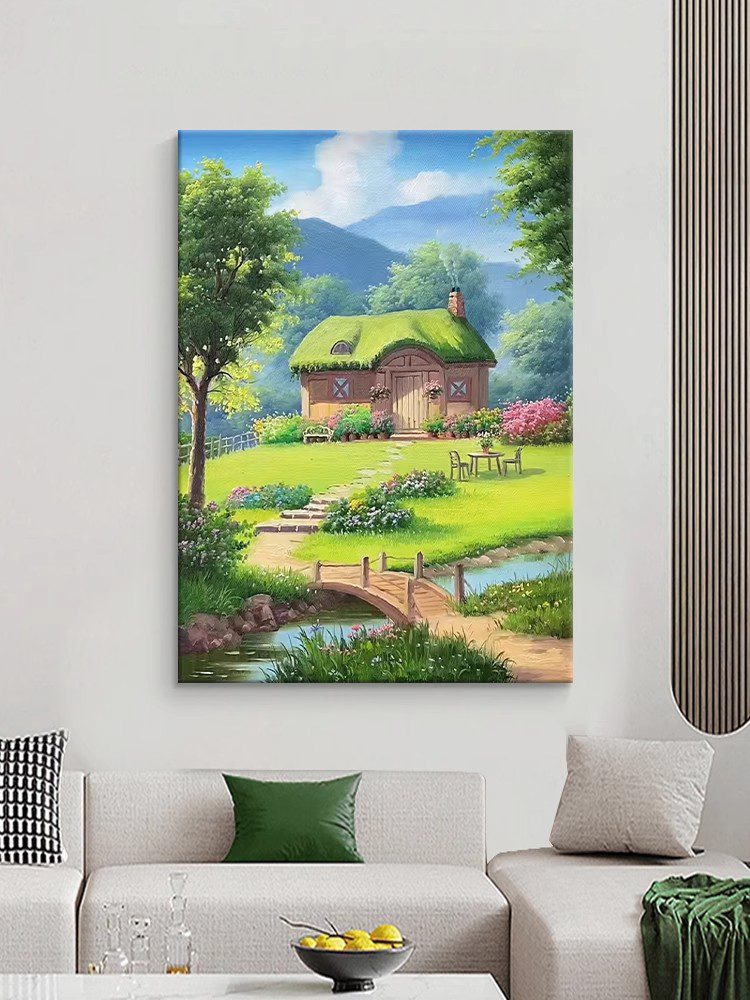Dry and wet painting techniques each have their own characteristics in hand-painted oil paintings and are often used in combination. The following will introduce the applications of dry painting, wet painting, and the combination of dry and wet painting respectively:
Application of dry drawing method
Expressing solid forms and rich colors: The dry painting method is characterized by definite brushstrokes, solid form shaping, and rich and saturated colors. When drawing the bright parts of an object or the areas that need to highlight the texture, the dry drawing method can well display the details and forms of the object. For instance, when painting a portrait of a person, the bright areas such as the face and hands can be painted dry. By layering pigments, the colors can be made more saturated, highlighting the delicate texture of the skin.
Creating clear Outlines and brushstrokes: The dry drawing method is suitable for depicting the Outlines and clear brushstrokes of objects. When drawing objects with sharp lines, such as buildings and furniture, the dry drawing method can make the lines clearer and more distinct, enhancing the three-dimensional and spatial sense of the objects. For instance, when painting an ancient castle, using the dry drawing method to outline the castle’s contours and the lines of its doors and Windows can highlight the castle’s sense of vicissitude and weight.
Application of wet painting method
Create a smooth and lustrous transition effect: The wet painting method allows colors to blend naturally on the wet paint, generating a smooth and lustrous feeling, which is suitable for expressing soft transitions and gradient effects. When painting large areas of objects such as the sky, clouds and water surfaces with relatively soft color transitions, the wet painting method can create a natural and harmonious atmosphere. For instance, when painting a seaside landscape, using the wet painting technique to represent the color transition between the sky and the sea can make the sky and the sea blend into one, giving people a sense of ethereality and remoteness.
Quick representation of large areas of color: The painting cycle of the wet painting method is generally shorter compared to the dry painting method, making it suitable for quickly representing large areas of color. When it is necessary to complete the background or a large area of base color of a work in a short time, the wet painting method can improve the painting efficiency. For instance, when doing a sketch, to quickly capture the scene before your eyes, you can first use the wet painting method to rapidly lay out the general colors of the sky, the ground, etc.
Application of dry-wet combined drawing method
Enrich the layers and effects of the picture: The dry-wet combined painting method not only integrates the advantages of both dry and wet painting methods, but also easily presents a more ideal color effect. When doing still life sketching, the background and dark areas are suitable for wet painting, making the colors lustrous and layered. The middle colors and bright areas can be painted dry to enhance the three-dimensional effect and texture of the object. For instance, when drawing a group of fruits, using the wet drawing method to represent the background and the dark parts of the fruits, and then using the dry drawing method to depict the bright parts and highlights of the fruits can make the picture more vivid and varied.
Enhance the spatial sense and charm of the picture: When painting landscapes, wet painting should be used for the sky, clouds and large areas of color in the distance to create an open and distant atmosphere. For nearby buildings, trees and other objects, the dry painting method is adopted to highlight the details and texture of the objects. This not only maintains the overall tone atmosphere but also makes the details rich and vivid, which is conducive to the expression of the sense of depth in three-dimensional space. Meanwhile, the combination of dry and wet techniques can also create an illusory feeling, as if the scenes in the picture are floating on the clouds or immersed in a hazy dream, evoking reverie in people’s hearts.
